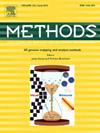开发并验证用于预测糖尿病口服药物药物相互作用的机器学习模型。
IF 4.2
3区 生物学
Q1 BIOCHEMICAL RESEARCH METHODS
引用次数: 0
摘要
糖尿病的治疗往往因合并症而变得复杂,需要复杂的用药方案,这增加了药物相互作用(DDI)的风险,可能会影响治疗效果或导致中毒。虽然机器学习(ML)模型在 DDI 预测方面取得了长足进步,但现有方法对口服糖尿病药物缺乏特异性,在可解释性方面也面临挑战。为了解决这些局限性,我们提出了一种基于 ML 的新型框架,利用简化分子输入行输入系统(SMILES)来编码口服糖尿病药物的结构信息。利用这种表示方法,我们开发了一个 XGBoost 模型,通过 LASSO 选择分子特征。我们的数据集来自 DrugBank,包括 42 种口服糖尿病药物和 1,884 种相互作用药物,分为训练集、验证集和测试集。该模型识别出 606 个最佳特征,F1 分数达到 0.8182。采用 SHAP 分析进行特征解释,提高了模型的透明度和临床相关性。通过预测不良的 DDIs,我们的模型为临床决策提供了有价值的工具,有助于更安全的处方实践。606 个关键特征深入揭示了原子级的相互作用,将计算预测与生物实验联系起来。我们提出的分类模型专门用于预测与口服糖尿病药物相关的DDIs,并提供了一个可公开访问的网络应用程序,以支持多种药物治疗方案和合并症环境下的糖尿病管理。本文章由计算机程序翻译,如有差异,请以英文原文为准。
Development and validation of a machine learning model for predicting drug-drug interactions with oral diabetes medications
Diabetes management is often complicated by comorbidities, requiring complex medication regimens that increase the risk of drug-drug interactions (DDIs), potentially compromising treatment outcomes or causing toxicity. Although machine learning (ML) models have made strides in DDI prediction, existing approaches lack specificity for oral diabetes medications and face challenges in interpretability. To address these limitations, we propose a novel ML-based framework utilizing the Simplified Molecular Input Line Entry System (SMILES) to encode structural information of oral diabetes drugs. Using this representation, we developed an XGBoost model, selecting molecular features through LASSO. Our dataset, sourced from DrugBank, included 42 oral diabetes drugs and 1,884 interacting drugs, divided into training, validation, and testing sets. The model identified 606 optimal features, achieving an F1-score of 0.8182. SHAP analysis was employed for feature interpretation, enhancing model transparency and clinical relevance. By predicting adverse DDIs, our model offers a valuable tool for clinical decision-making, aiding safer prescription practices. The 606 critical features provide insights into atomic-level interactions, linking computational predictions with biological experiments. We present a classification model specifically designed for predicting DDIs associated with oral diabetes medications, with an openly accessible web application to support diabetes management in multi-drug regimens and comorbidity settings.
求助全文
通过发布文献求助,成功后即可免费获取论文全文。
去求助
来源期刊

Methods
生物-生化研究方法
CiteScore
9.80
自引率
2.10%
发文量
222
审稿时长
11.3 weeks
期刊介绍:
Methods focuses on rapidly developing techniques in the experimental biological and medical sciences.
Each topical issue, organized by a guest editor who is an expert in the area covered, consists solely of invited quality articles by specialist authors, many of them reviews. Issues are devoted to specific technical approaches with emphasis on clear detailed descriptions of protocols that allow them to be reproduced easily. The background information provided enables researchers to understand the principles underlying the methods; other helpful sections include comparisons of alternative methods giving the advantages and disadvantages of particular methods, guidance on avoiding potential pitfalls, and suggestions for troubleshooting.
 求助内容:
求助内容: 应助结果提醒方式:
应助结果提醒方式:


